Effects of Environmental Factors on Concrete Carbonation Depth and Compressive Strength
Abstract
:1. Introduction
2. Experimental Procedure
2.1. Raw Materials
2.2. Experimental Process
2.3. Test Instruments and Devices
3. Results and Discussions
3.1. Effects of Temperature on Carbonation Depth and Compressive Strength of Concrete
3.2. Effects of Relative Humidity on the Carbonation Depth and Compressive Strength of Concrete
3.3. Effects of CO2 on the Carbonation Depth and Compressive Strength of Concrete
3.4. XRD and ESEM Analysis before and after the Concrete Carbonation
4. Conclusions
- 1
- Temperature, CO2 concentration and relative humidity influence the carbonation depth and compressive strength of concrete significantly. Temperature has a linear relationship with the carbonation depth and compressive strength of concrete. CO2 concentration and relative humidity present power and polynomial functions with the carbonation depth of concrete, respectively.
- 2
- The carbonation depth of concrete is positively correlated with temperature and CO2 concentration, but the compressive strength of concrete is negatively correlated with the strength grade of concrete. The carbonation depth of concrete increases with the increase of the relative humidity and reaches the peak when the relative humidity is 70%. This is because the CO2 transmission coefficient and chemical reaction coefficient may increase with temperature. Besides, the increase of the CO2 concentration may bring the increase of the concentration gradient and the CO2 concentration in concrete, as well as the intensified carbonation. Concrete density is positively related to the strength grade of concrete. The CO2 transmission coefficient in concrete is low, which may decrease the carbonation depth of concrete.
- 3
- The phase composition, hydration products and microstructure of concrete change significantly before and after the carbonation. Such changes are mainly manifested by the disappearance and attenuation of the diffraction peak of some hydration products. XRD and ESEM spectral analysis reveal that hexagonal plate-like CH, rod-like AFt, flocculent CSH and CAH are major hydration products before the carbonation, but particulate CaCO3 takes the dominant role in hydration product composition after the carbonation. Temperature affects the crystal form of carbonation products. Polyhedral spherical vaterites are major carbonation products under 10 °C and 20 °C, whereas aragonites are the major carbonation products under 30 °C.
Author Contributions
Funding
Conflicts of Interest
References
- Verma, S.K.; Bhadauria, S.S.; Akhtar, S. Determination of carbonation depth through in-situ testing of concrete structures. Rev. Romama Mater. 2015, 45, 226–231. [Google Scholar]
- Saetta, A.V.; Vitaliani, R.V. Experimental investigation and numerical modeling of carbonation process in reinforced concrete structures Part II: Practical applications. Cem. Concr. Res. 2005, 35, 958–967. [Google Scholar]
- Cheng, Y.C.; Zhang, Y.W.; Jiao, Y.B.; Yang, J.S. Quantitative analysis of concrete property under effects of crack, freeze-thaw and carbonation. Constr. Build. Mater. 2016, 129, 106–115. [Google Scholar] [CrossRef]
- Garcia, S.T.; Yepes, V.; Alcala, J. Life cycle greenhouse gas emissions of blended cement concrete including carbonation and durability. Int. J. Life Cycle Assess. 2014, 19, 3–12. [Google Scholar] [CrossRef]
- Alexander, M.G.; Mackechnie, J.R.; Yam, W. Carbonation of concrete bridge structures in three South African localities. Cem. Concr. Comp. 2007, 29, 750–759. [Google Scholar] [CrossRef]
- Singh, N.; Singh, S.P. Reviewing the carbonation resistance of concrete. J. Mater. Eng. Struct. 2016, 3, 35–37. [Google Scholar]
- Lee, M.K.; Jung, S.H.; Oh, B.H. Effects of carbonation on chloride penetration in concrete. ACI Mater. J. 2014, 111, 458–459. [Google Scholar]
- Castel, A.; Francois, R.; Arliguie, G. Effect of loading on carbonation penetration in reinforced concrete elements. Cem. Concr. Res. 1999, 29, 561–565. [Google Scholar] [CrossRef]
- Northwood, D.O.; Roy, S.K.; Beng, P.K. The carbonation of concrete structures in the tropical environment of singapore and a comparison with published data for temperate climates. Mag. Concr. Res. 1996, 48, 293–300. [Google Scholar]
- Talukdar, S.; Banthia, N.; Grace, J.R.; Cohen, S. Carbonation in concrete infrastructure in the context of global climate change: Part 2-Canadian urban simulations. Cem. Concr. Comp. 2012, 34, 931–935. [Google Scholar] [CrossRef]
- Medeiros, R.A.; Lima, M.G.; Yazigi, R.; Medeiros, M.H.F. Carbonation depth in 57 years old concrete structures. Steel Compos. Struct. 2015, 19, 953–966. [Google Scholar] [CrossRef]
- Talukdar, S.; Banthia, N.; Grace, J.R. Carbonation in concrete infrastructure in the context of global climate change—Part 1: Experimental results and model development. Cem. Concr. Comp. 2012, 34, 924–930. [Google Scholar] [CrossRef]
- Kumazaki, K. Large time behavior of a solution of carbon dioxide transport model in concrete carbonation process. J. Differ. Equ. 2014, 257, 2136–2158. [Google Scholar] [CrossRef]
- Chang, C.F.; Chen, J.W. The experimental investigation of concrete carbonation depth. Cem. Concr. Res. 2006, 36, 1760–1767. [Google Scholar] [CrossRef]
- Zhao, H.; Sun, W.; Wu, X.M.; Gao, B. The effect of the material factors on the concrete resistance against carbonation. KSCE J. Civ. Eng. 2018, 22, 1265–1274. [Google Scholar] [CrossRef]
- Atis, C.D. Accelerated carbonation and testing of concrete made with fly ash. Constr. Build. Mater. 2003, 17, 147–152. [Google Scholar] [CrossRef]
- Lye, C.Q.; Dhir, R.K.; Ghataora, G.S. Carbonation resistance of fly ash concrete. Mag. Concr. Res. 2015, 67, 1150–1178. [Google Scholar] [CrossRef]
- Zhang, D.; Shao, Y. Effect of early carbonation curing on chloride penetration and weathering carbonation in concrete. Constr. Build. Mater. 2016, 123, 516–526. [Google Scholar] [CrossRef]
- Banthia, N.; Cohen, S.; Talukdar, S.; Grace, J. Climate change-induced carbonation of concrete infrastructure. Constr. Mater. 2014, 167, 140–150. [Google Scholar]
- Steffens, A.; Dinkler, D.; Ahrens, H. Modeling carbonation for corrosion risk prediction of concrete structures. Cem. Concr. Res. 2002, 32, 935–941. [Google Scholar] [CrossRef]
- Cui, H.Z.; Tang, W.C.; Liu, W.; Dong, Z.J.; Xing, F. Experimental study on effects of CO2 concentrations on concrete carbonation and diffusion mechanisms. Constr. Build. Mater. 2015, 93, 522–527. [Google Scholar] [CrossRef]
- Leemann, A.; Moro, F. Carbonation of concrete: the role of CO2 concentration, relative humidity and CO2 buffer capacity. Mater. Struct. 2017, 50, 30–43. [Google Scholar] [CrossRef]
- Golewski, G.L. Generalized fracture toughness and compressive strength of sustainable concrete including low calcium fly ash. Materials 2017, 10, 1393. [Google Scholar] [CrossRef] [PubMed]
- Golewski, G.L. Green concrete composite incorporating fly ash with high strength and fracture toughness. J. Clean. Prod. 2018, 172, 218–226. [Google Scholar] [CrossRef]
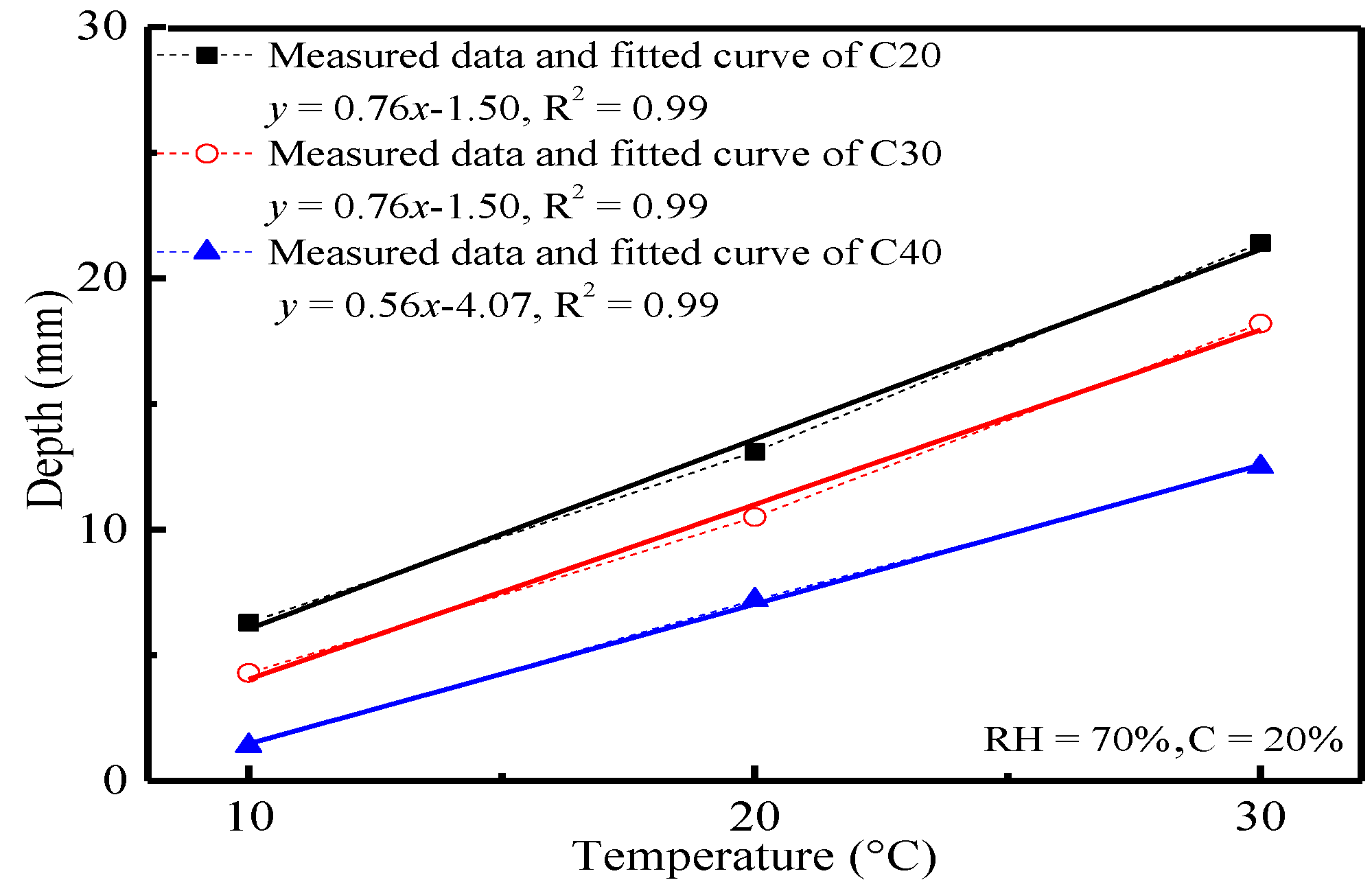
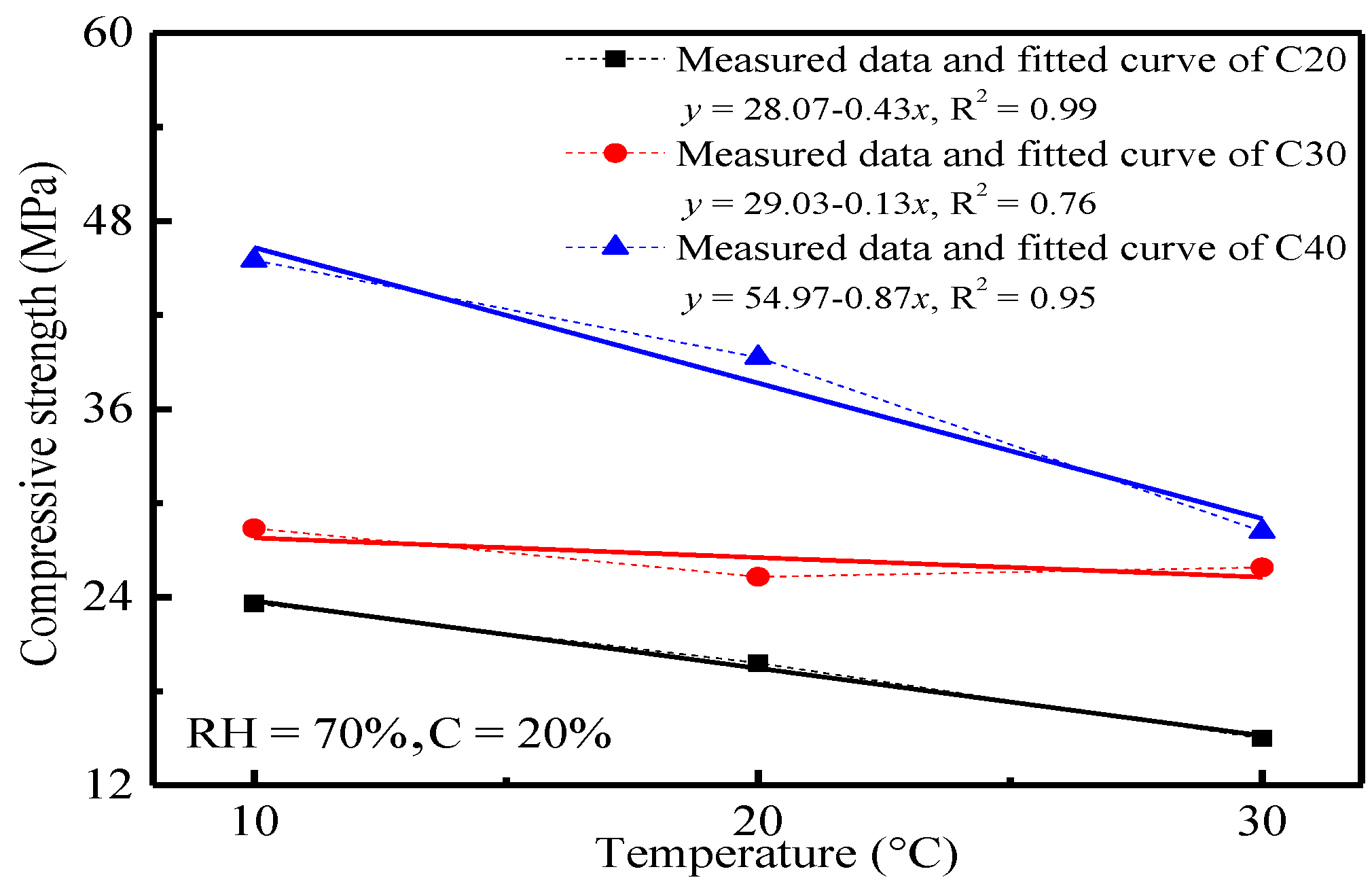
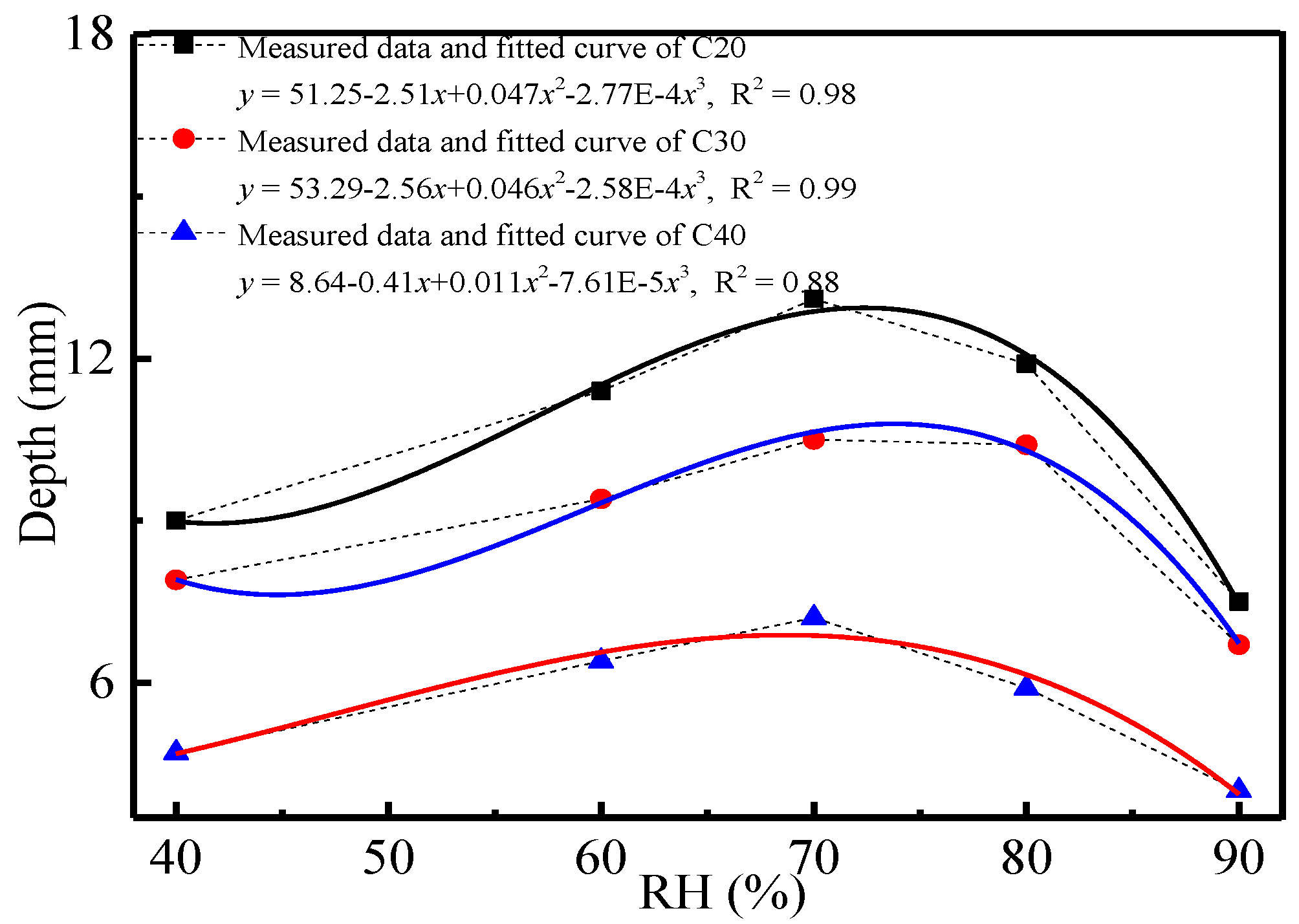
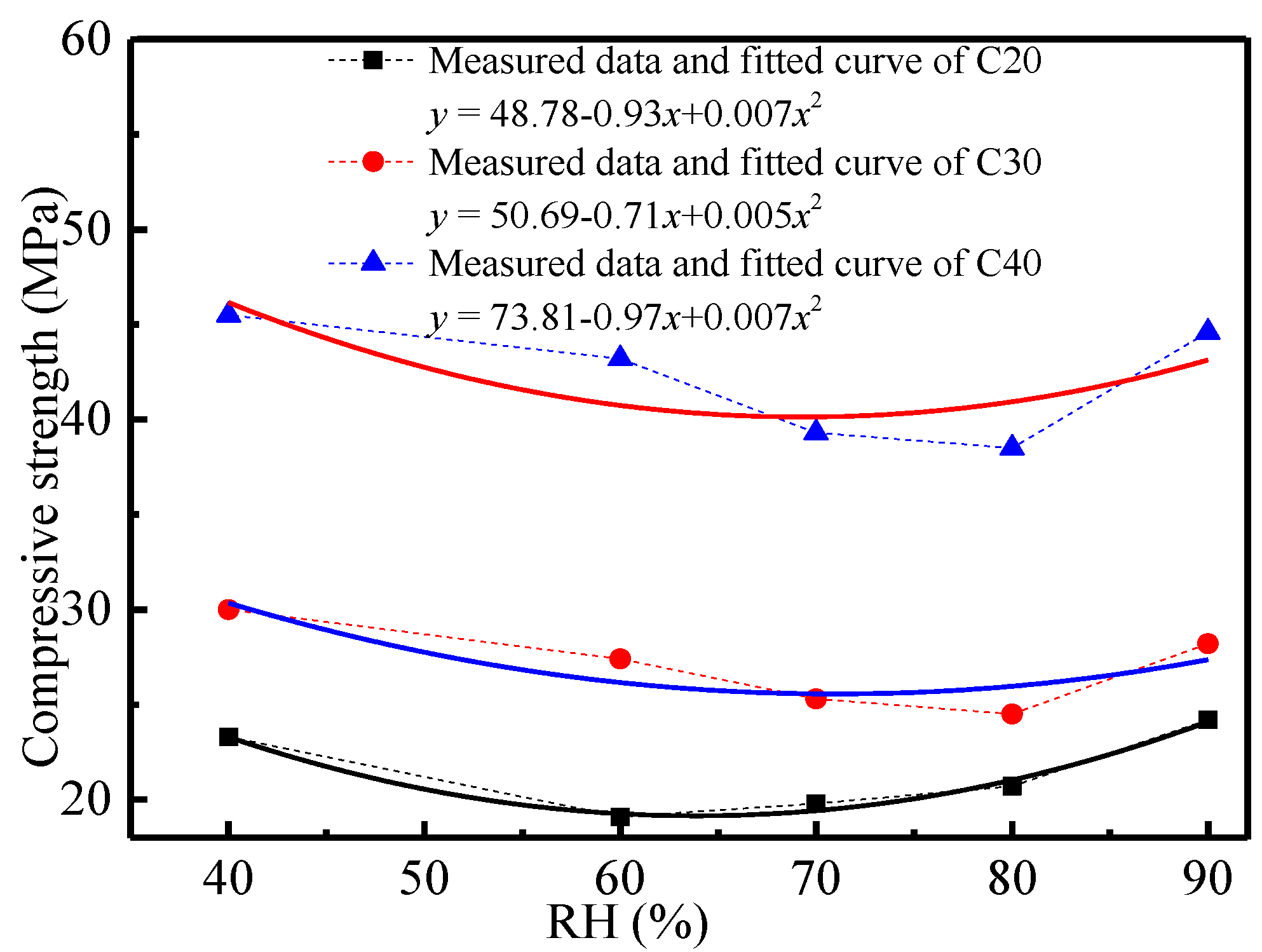

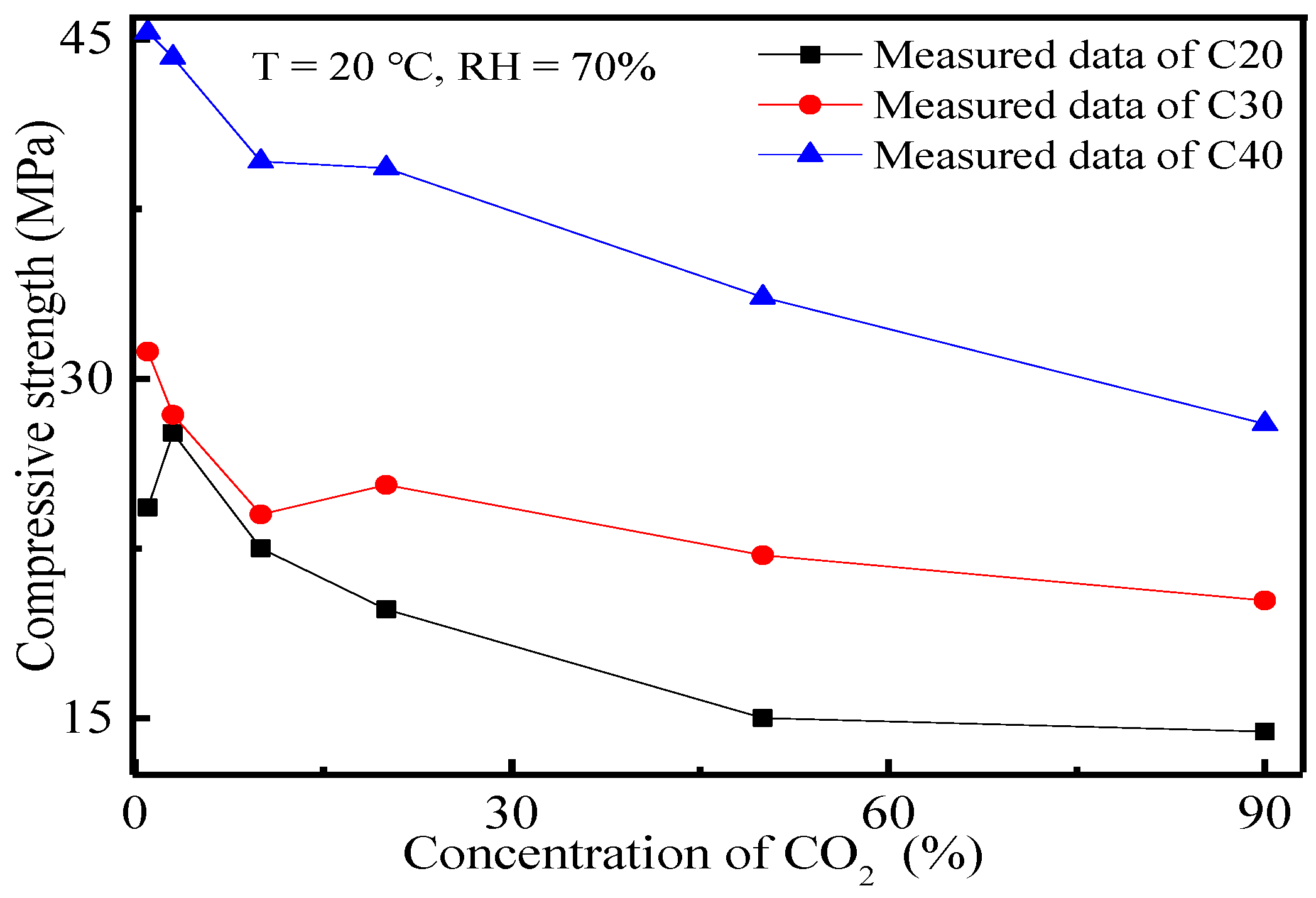
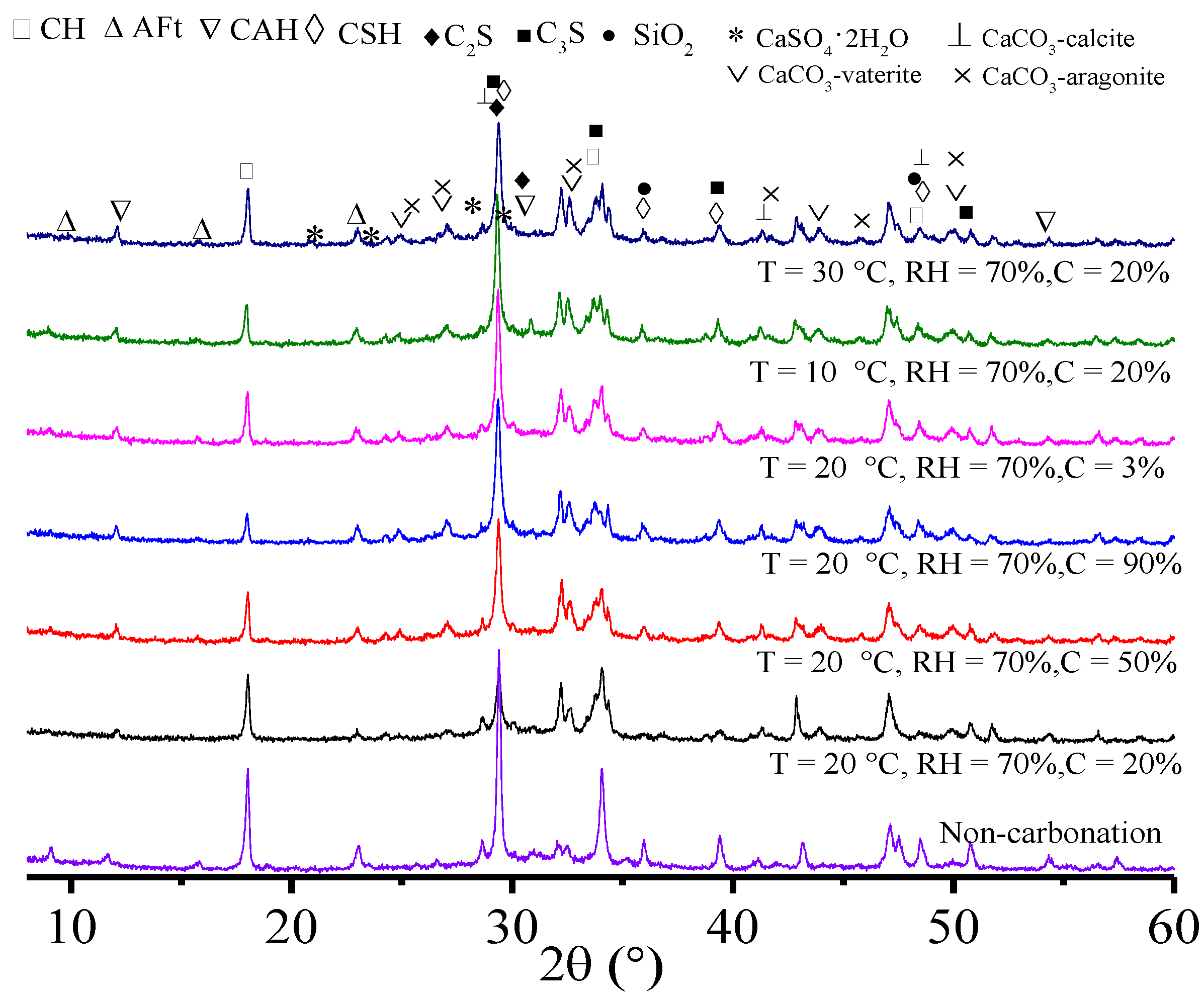
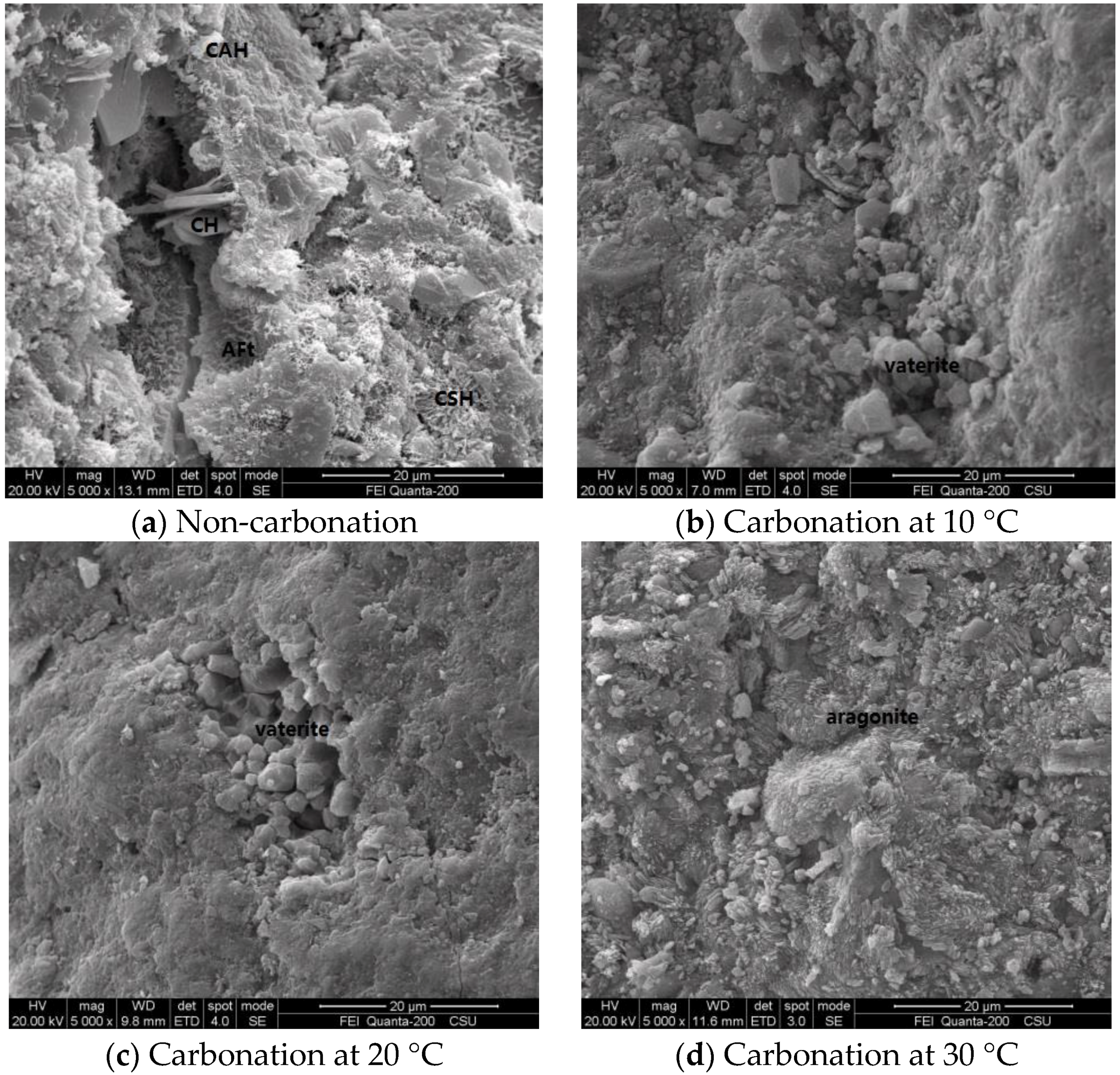
| Items | Fineness (74-μm mesh) (%) | Density (g/cm3) | Specific Surface Area (m2/kg) | Water Requirement of Normal Consistency (%) | Initial Setting Time (min) | Final Setting Time (min) | Compressive Strength (28 d) (MPa) |
|---|---|---|---|---|---|---|---|
| Cement | 0.6 | 3.15 | 349 | 25.8 | 130 | 195 | 45.8 |
| Fly ash | 1.5 | 2.83 | 322 | - | - | - | - |
| CaO | SiO2 | Al2O3 | Fe2O3 | MgO | Na2O | K2O | SO3 | P2O3 | Loss |
|---|---|---|---|---|---|---|---|---|---|
| 2.57 | 54.0 | 27.7 | 6.11 | 1.23 | 0.37 | 1.50 | 0.14 | - | 2.56 |
| Items | Cement | Fly Ash | Fine Aggregate | Coarse Aggregate | Water | Water Reducer |
|---|---|---|---|---|---|---|
| C20 | 195 | 128(39.6%) | 785 | 1045 | 178 | 1.8 |
| C30 | 270 | 125(31.6%) | 780 | 1050 | 172 | 1.9 |
| C40 | 350 | 122(25.8%) | 710 | 1052 | 162 | 2.25 |
© 2018 by the authors. Licensee MDPI, Basel, Switzerland. This article is an open access article distributed under the terms and conditions of the Creative Commons Attribution (CC BY) license (http://creativecommons.org/licenses/by/4.0/).
Share and Cite
Chen, Y.; Liu, P.; Yu, Z. Effects of Environmental Factors on Concrete Carbonation Depth and Compressive Strength. Materials 2018, 11, 2167. https://doi.org/10.3390/ma11112167
Chen Y, Liu P, Yu Z. Effects of Environmental Factors on Concrete Carbonation Depth and Compressive Strength. Materials. 2018; 11(11):2167. https://doi.org/10.3390/ma11112167
Chicago/Turabian StyleChen, Ying, Peng Liu, and Zhiwu Yu. 2018. "Effects of Environmental Factors on Concrete Carbonation Depth and Compressive Strength" Materials 11, no. 11: 2167. https://doi.org/10.3390/ma11112167
APA StyleChen, Y., Liu, P., & Yu, Z. (2018). Effects of Environmental Factors on Concrete Carbonation Depth and Compressive Strength. Materials, 11(11), 2167. https://doi.org/10.3390/ma11112167





